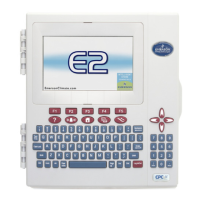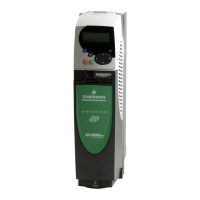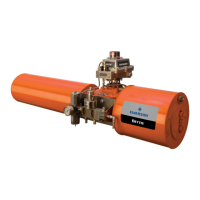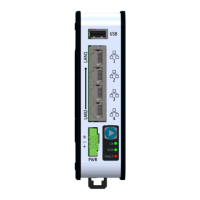©2017 Nelson Heat Tracing Systems
11
GA2497 Rev.5
CM-2201/CM-2202
Control Modes
6.1
Control Modes
The CM-2201/CM-2202 allows the user to select different
control modes based on their individual process control
parameters.
6.2
On-Off Control
This control method simply energizes the cable until the
actual monitored temperature rises to the set point value
plus half the deadband value (upper limit). The cable is
then
de-energized until the actual monitored temperature
drops to
the setpoint value minus half the deadband value.
Note that
this type of control can result in some temperature
“overshoot;”. This is because the cable is de-energized
when
the monitored temperature reaches the upper limit.
However,
the residual heat in the cable continues to transfer
to the
pipe, and this will cause the pipe temperature to
increase
slightly above the upper limit. Similarly, there can
be some
temperature “undershoot.”
6.3
Proportional Control
This control method uses the typical proportional control
algorithm wherein the cable is cycled on and off at a rate
proportional to the difference between the setpoint value and
the actual monitored temperature. As the difference
between the set point value and the actual monitored
temperature increases, the amount of time the cable is
energized increases proportionately. This helps reduce the
“overshoot”and“undershoot”commonly associated with
On/Off control.
6.4
Forced Control Feature
This control method simply allows the user to force the
cable on or off as desired using an external signal (eg +5
VDC or 24 VAC) applied to the IN and G terminals or an
external dry contact across the +5V and IN terminals.
The External Disable must be set to “ON” to allow for
external control, at which point the controller operates
as follows:
A)
If the Temperature setpoint is “OFF” or “None”,
then the heater gets energized by applying the
external signal or closing the external contact.
B) If the Temperature setpoint is a specific value
(eg 55C), then the setpoint will be maintained as
per normal operation ONLY when the external
signal is present or the external contact is closed
– otherwise, the heater will be disabled.
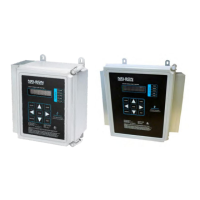
